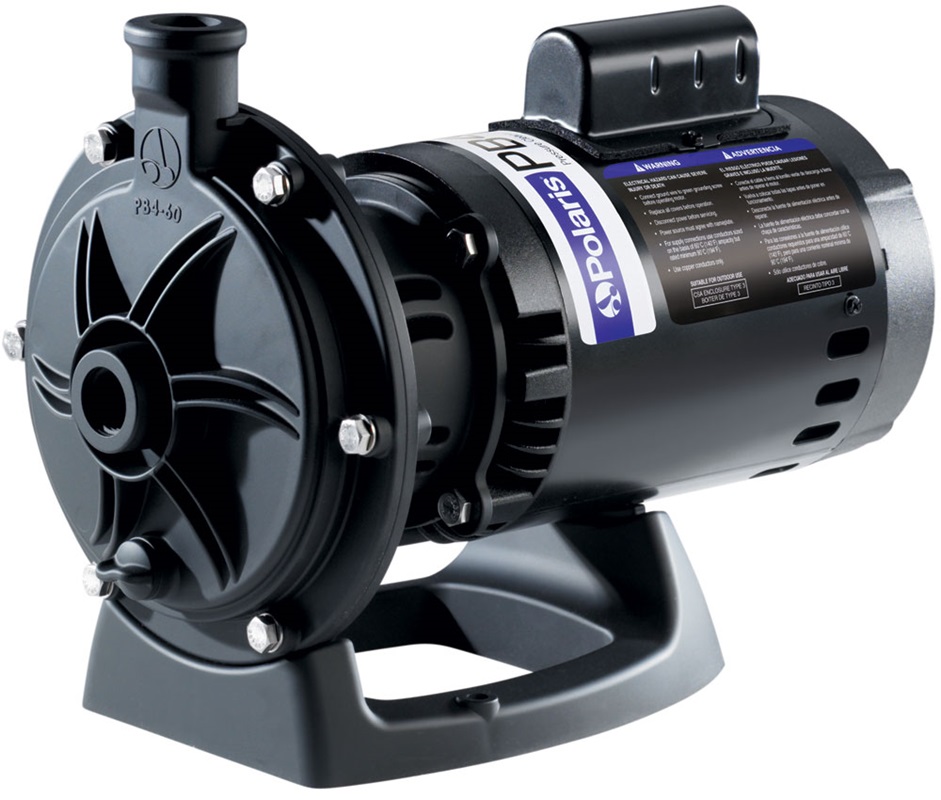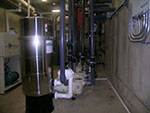How does this all fit together? Sizing your pool equipment
One thing we often find during an evaluation of pool equipment is that the components of the system are not designed to work efficiency in the areas of filtration, circulation, cleaning and heating. In some cases, pumps are much more powerful than what the filters can handle. Or there may be valves or plumbing discrepancies that inhibit proper flow. If not grouped together in complementary sets, pool equipment components can waste energy, reduce the cleanliness of the water, and cause damage to each other.

Filtration is Critical
Whether you own a sand filter, a diatomaceous earth (DE) filter, or a cartridge filter, their purposes remain the same: take unwanted material out of the water (normally organic material) so that the pool is clean and clear. There are various sizes of each type of filter. Still, universally speaking, all pool and spa filters have the same general limitations.
Pressure Limitations
Almost all residential filters are labeled with the same pressure limitation: 50 pounds per square inch (PSI). However, that maximum rating is well above the actual, uppermost pressure one can allow for a filter. In other words, once you approach 50 PSI, you risk damage to the filter itself, persons working or playing around the filter, and property near the filter. A good, working pressure varies from system to system, but on average, proper and safe filtration occurs between 10-30 PSI.
Flow Limitations
Maximum flow capabilities for filters depend on filter media surface area. For instance, DE filters allow for 2 times the square footage of the filter in terms of gallons per minute (GPM) flow. If the filter is a 60-square-foot DE filter, the maximum flow it can handle in nominal circumstances (clean filter, no damage to internal components, and proper plumbing around it) is 120 GPM. A cartridge filter allows 1 GPM for each square foot of filtration area. High-rate sand filters found in many residential pools allow for 15-20 GPM per square foot of surface area on top of the sand. Determining the flow rate of the filter is the ideal way to size it to the filter pump and the pool’s volume.
Plumbing Limitations
The hydraulics involved in pool work are quite complex. Pipe sizing, plumbing fittings, and pool valve installation all play a major role in determining how much water can be pumped from the pool, through the filter, and back to the pool. Every component in a pool’s circulation system affects the efficiency of that system. The overall goal is to account for the necessary flow to allow for all the water in a residential pool to be filtered within 8-12 hours. This is known as turnover rate. In many systems we have observed, valves that are too restrictive and strange plumbing practices increase resistance, leading to inadequate flow rates. Regardless of any filter’s flow rate, the resistance of the plumbing design is the ultimate factor determining the turnover rate.
Pump it Up!

A filter pump is the heart of any pool or spa circulation system. Determining the proper horsepower is of utmost importance for a properly-functioning circulation system. An oversized pump wastes energy and will damage the components of a filter over time. If such a pump is forcing, say, 120 gallons per minute through a filter that can only allow 90 GPM, the pump is using more energy than necessary and is causing any one of a number of problems inside the filter. Although an undersized pump is more desirable than an oversized one, there are a few potential problems with such a scenario. If the filter requires regular backwashing, an undersized pump cannot get properly cleaned during backwashing; this results in filtered debris piling up inside of that filter, reducing its effectiveness.
Pool professionals use what’s called a pump performance curve chart, provided by pump manufacturers, to determine a pump’s capability in relation to the total resistance to flow of a circulation system. This, in short, is a tool we can use to figure out which pump is the best choice for the pool circulation system in question and ensure the correct pool equipment components are used.
Too hot? Too cold? This one is just right
Other pool equipment components that come in various sizes are the pool and spa heater. Since the primary means of heating a residential pool in the Dallas Texas area is through natural gas (and often propane gas), we will refer to those types in this discussion. Still, the same general guidelines apply. The formula for how to size your heater to your pool primarily relates to the surface area of the pool. In practical application, we take our understanding of the science and ask some questions of the homeowner. Let’s say you have a 10,000-gallon pool. The smallest of gas-fired heaters can eventually heat your pool, but will it do so as quickly as you like? And speed may not really be a factor if you are interested in heating your pool for long, extended periods of time. Then, a 200,000 BTU pool heater might work well when running constantly for weeks and weeks, extending the swim season. The factors for choosing a pool heater are (1) the size of the existing gas line for gas-fired heaters; (2) surface area of the water and overall size of the pool (3) how on-demand you expect your pool to be heated, and (4) how often/for how long you plan to heat the pool.
Generally speaking, for pools and spas and combinations of both, we recommend you consider the biggest heater available, proportionate to the sizing of the plumbing that delivers the gas. Spa usage is typically an on-demand activity, so you want it to heat as quickly as possible. However, even smaller heaters can heat smaller spas quickly enough – depending on your expectations.
The Perfect Fit
The technicians at Select Pool Services are well-trained to understand how all these pool equipment components work together efficiently to allow you and your family the best swimming experience possible. Whether you have a pump, filter, or heater installation or repair issue, you can trust our expertise in making all the pieces work well for you. Call us with questions or to schedule an appointment.
